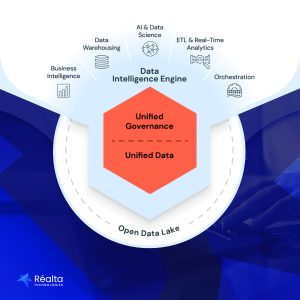PI System Upgrade Case Study for Pharmaceutical Manufacturing | Réalta Technologies
PI System Upgrade Case Study for Pharmaceutical Manufacturing | Réalta Technologies
Introduction:
Réalta Technologies recently completed a critical PI System upgrade for a leading pharmaceutical manufacturer. The project involved replacing ageing hardware and unsupported operating systems, ensuring the client’s data infrastructure met modern performance, security, and compliance standards.
As a trusted partner and AVEVA Endorsed System Integrator, Réalta Technologies delivered a seamless transition to a fully upgraded system without data loss, enabling the client to continue operations without disruption and minimal downtime.
The Challenge
The client’s PI System servers were operating on outdated hardware and operating systems. An upgrade-in-place was not possible due to:
- Incompatibility with newer OS versions and software.
- Requirement for new hardware to meet performance demands.
- The need to keep existing servers intact for rollback in case of an issue.
- The critical need to avoid any data loss during the transition.
These constraints required a carefully designed migration strategy that balanced operational continuity, data integrity, and validation requirements.
Possible Solutions
Drawing on extensive experience in industrial data infrastructure projects, Réalta Technologies identified three potential upgrade strategies:
Option 1: Adding New Servers to the PI Collective
- Build new servers on new hardware and OS.
- Add them to the existing PI System Collective.
- Promote one of the new servers to Primary Data Archive.
- Remove old servers once complete.
Pros: Minimal downtime, data available to users throughout.
Cons: Requires reconfiguring and restarting all interfaces, which can be time-consuming with large systems.
Option 2: Swapping Names and IP Addresses
- Build new servers with temporary names.
- Stop the PI Data Archives.
- Swap the names/IP addresses with the old servers.
- Restart PI Data Archives on the new hardware.
Pros: No interface reconfiguration required.
Cons: Brief downtime while archives are offline, though buffered data is restored.
Option 3: Building a Complete Parallel System
- Create a fully independent system (Data Archive, AF, interface servers).
- Restore a backup from the old system.
- Run both systems in parallel until testing and validation are complete.
Pros: Safest approach, full validation before go-live, allows migration from Batch to Event Frames database in a controlled environment.
Cons: Requires more time, resources, and hardware.
Chosen Solution
After carefully reviewing all available upgrade paths, Réalta Technologies determined that Option 2: Swapping Names and IP Addresses was the most effective and efficient solution for this specific project.
This decision was based on our team’s in-depth understanding of both the technical requirements and the operational constraints within regulated pharmaceutical manufacturing. By applying our expertise in designing bespoke solutions, we were able to match the upgrade approach precisely to the client’s unique needs.
Several factors influenced our decision:
- Minimising Disruption: The client’s PI System had multiple critical interfaces feeding data from across the site. Reconfiguring and restarting these, as required in other options, would have posed significant risk and extended downtime. Retaining the same names and IP addresses allowed us to transition to the new infrastructure seamlessly without altering the existing interface configuration.
- Maintaining Operational Continuity: Pharmaceutical manufacturing operates under strict production and compliance demands. Swapping Names and IP Addresses enabled the upgrade to be completed within a tightly controlled maintenance window, avoiding unnecessary interruption to manufacturing activities.
- Safeguarding Data Integrity: Our approach ensured that all data generated during the brief downtime was buffered and automatically restored to the upgraded system, protecting the accuracy and completeness of production records.
- Bespoke Problem-Solving: Rather than applying a one-size-fits-all upgrade method, we evaluated the project holistically, balancing efficiency, safety, and compliance. Option 2 offered the best combination of speed, reliability, and risk mitigation for this particular environment.
This tailored solution is a clear example of how Réalta Technologies leverages its deep technical expertise and industry knowledge to deliver results that are both strategically sound and operationally safe, ensuring clients can modernise their systems without compromising productivity or compliance.
Benefits of Updating the PI System
- Modern Infrastructure: New hardware and OS increased system performance and stability.
- Data Integrity: All historical data retained with no loss during migration.
- Reduced Operational Risk: Fully tested migration plan ensured predictable results.
- Regulatory Compliance: Updated system aligned with industry best practices and supported ongoing GMP compliance.
- Future-Ready Platform: Prepared for integration with advanced analytics, data visualisation tools, and machine learning applications.
Conclusion
This PI System upgrade demonstrated Réalta Technologies’ expertise in designing and executing complex data infrastructure projects for regulated industries. By selecting the optimal migration strategy and executing it flawlessly, Réalta ensured the client could continue delivering high-quality pharmaceutical products with minimal disruption.
As an AVEVA Endorsed System Integrator, Réalta Technologies provides tailored solutions that modernise industrial data systems while safeguarding compliance, security, and operational excellence.
Need help with updating your systems? Get in touch with our team.
Phone: +353 21 243 9113
Email: [email protected]

PI System Upgrade Case Study for Pharmaceutical Manufacturing | Réalta Technologies
Réalta Technologies successfully upgraded a pharmaceutical client’s PI System, replacing outdated hardware and operating systems with a modern, compliant, and high-performance infrastructure without losing a

Power BI, Tableau, and SEEQ: Data Visualisation Tools for Modern Manufacturing
Explore how Power BI, Tableau, and SEEQ compare when it comes to visualising data in manufacturing environments. This blog highlights their strengths, weaknesses, and real-world

What Is Databricks? A Modern Data Platform for Modern Businesses
Databricks is a powerful data analytics platform that unifies data engineering, machine learning, and business intelligence at scale. In this blog, we explore what Databricks
PI System Upgrade Case Study for Pharmaceutical Manufacturing | Réalta Technologies
Introduction:
Réalta Technologies recently completed a critical PI System upgrade for a leading pharmaceutical manufacturer. The project involved replacing ageing hardware and unsupported operating systems, ensuring the client’s data infrastructure met modern performance, security, and compliance standards.
As a trusted partner and AVEVA Endorsed System Integrator, Réalta Technologies delivered a seamless transition to a fully upgraded system without data loss, enabling the client to continue operations without disruption and minimal downtime.
The Challenge
The client’s PI System servers were operating on outdated hardware and operating systems. An upgrade-in-place was not possible due to:
- Incompatibility with newer OS versions and software.
- Requirement for new hardware to meet performance demands.
- The need to keep existing servers intact for rollback in case of an issue.
- The critical need to avoid any data loss during the transition.
These constraints required a carefully designed migration strategy that balanced operational continuity, data integrity, and validation requirements.
Possible Solutions
Drawing on extensive experience in industrial data infrastructure projects, Réalta Technologies identified three potential upgrade strategies:
Option 1: Adding New Servers to the PI Collective
- Build new servers on new hardware and OS.
- Add them to the existing PI System Collective.
- Promote one of the new servers to Primary Data Archive.
- Remove old servers once complete.
Pros: Minimal downtime, data available to users throughout.
Cons: Requires reconfiguring and restarting all interfaces, which can be time-consuming with large systems.
Option 2: Swapping Names and IP Addresses
- Build new servers with temporary names.
- Stop the PI Data Archives.
- Swap the names/IP addresses with the old servers.
- Restart PI Data Archives on the new hardware.
Pros: No interface reconfiguration required.
Cons: Brief downtime while archives are offline, though buffered data is restored.
Option 3: Building a Complete Parallel System
- Create a fully independent system (Data Archive, AF, interface servers).
- Restore a backup from the old system.
- Run both systems in parallel until testing and validation are complete.
Pros: Safest approach, full validation before go-live, allows migration from Batch to Event Frames database in a controlled environment.
Cons: Requires more time, resources, and hardware.
Chosen Solution
After carefully reviewing all available upgrade paths, Réalta Technologies determined that Option 2: Swapping Names and IP Addresses was the most effective and efficient solution for this specific project.
This decision was based on our team’s in-depth understanding of both the technical requirements and the operational constraints within regulated pharmaceutical manufacturing. By applying our expertise in designing bespoke solutions, we were able to match the upgrade approach precisely to the client’s unique needs.
Several factors influenced our decision:
- Minimising Disruption: The client’s PI System had multiple critical interfaces feeding data from across the site. Reconfiguring and restarting these, as required in other options, would have posed significant risk and extended downtime. Retaining the same names and IP addresses allowed us to transition to the new infrastructure seamlessly without altering the existing interface configuration.
- Maintaining Operational Continuity: Pharmaceutical manufacturing operates under strict production and compliance demands. Swapping Names and IP Addresses enabled the upgrade to be completed within a tightly controlled maintenance window, avoiding unnecessary interruption to manufacturing activities.
- Safeguarding Data Integrity: Our approach ensured that all data generated during the brief downtime was buffered and automatically restored to the upgraded system, protecting the accuracy and completeness of production records.
- Bespoke Problem-Solving: Rather than applying a one-size-fits-all upgrade method, we evaluated the project holistically, balancing efficiency, safety, and compliance. Option 2 offered the best combination of speed, reliability, and risk mitigation for this particular environment.
This tailored solution is a clear example of how Réalta Technologies leverages its deep technical expertise and industry knowledge to deliver results that are both strategically sound and operationally safe, ensuring clients can modernise their systems without compromising productivity or compliance.
Benefits of Updating the PI System
- Modern Infrastructure: New hardware and OS increased system performance and stability.
- Data Integrity: All historical data retained with no loss during migration.
- Reduced Operational Risk: Fully tested migration plan ensured predictable results.
- Regulatory Compliance: Updated system aligned with industry best practices and supported ongoing GMP compliance.
- Future-Ready Platform: Prepared for integration with advanced analytics, data visualisation tools, and machine learning applications.
Conclusion
This PI System upgrade demonstrated Réalta Technologies’ expertise in designing and executing complex data infrastructure projects for regulated industries. By selecting the optimal migration strategy and executing it flawlessly, Réalta ensured the client could continue delivering high-quality pharmaceutical products with minimal disruption.
As an AVEVA Endorsed System Integrator, Réalta Technologies provides tailored solutions that modernise industrial data systems while safeguarding compliance, security, and operational excellence.
Need help with updating your systems? Get in touch with our team.
Phone: +353 21 243 9113
Email: [email protected]

PI System Upgrade Case Study for Pharmaceutical Manufacturing | Réalta Technologies
Réalta Technologies successfully upgraded a pharmaceutical client’s PI System, replacing outdated hardware and operating systems with a modern, compliant, and high-performance infrastructure without losing a

Power BI, Tableau, and SEEQ: Data Visualisation Tools for Modern Manufacturing
Explore how Power BI, Tableau, and SEEQ compare when it comes to visualising data in manufacturing environments. This blog highlights their strengths, weaknesses, and real-world

What Is Databricks? A Modern Data Platform for Modern Businesses
Databricks is a powerful data analytics platform that unifies data engineering, machine learning, and business intelligence at scale. In this blog, we explore what Databricks
PI System Upgrade Case Study for Pharmaceutical Manufacturing | Réalta Technologies Read More »












